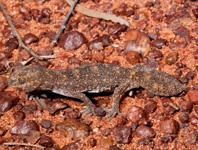Abstract
Two mealybug species (Hemiptera: Coccomorpha: Pseudococcidae) feeding on Proteaceae in U.S.A. (California), Portugal and Australia were studied: Paracoccus leucadendri Mazzeo & Franco in Mazzeo, Franco & Russo, 2009, described from Portugal, and Phenacoccus hakeae Williams, 1985, described from Australia. A comparative morphological analysis was made of relevant paratypes and additional specimens from Australia, California and Portugal, and the variability of the morphological characters in the populations in each country was documented. Molecular analysis of the COI gene of specimens from Australia and California showed them to be identical, and comparative morphological analysis among specimens from Australia, California and Portugal revealed no differences either; therefore Paracoccus leucadendri is placed as a junior synonym of Phenacoccus hakeae. A comparison of the COI sequences with those of species of Paracoccus, Phenacoccus and other mealybug genera revealed that Phenacoccus hakeae does not belong in Phenacoccus. Even though its COI shows no close match to any other species its morphology fits within the generic concept of Paracoccus, and we transfer it to that genus under the new combination Paracoccus hakeae (Williams, 1985) as a holding option until a comprehensive phylogenetic analysis of the group is carried out.
References
Cox, J.M. (1987) Pseudococcidae (Insecta: Hemiptera). Duval, C.T. (series ed.), Fauna of New Zealand, 11. DSIR Science Information Publishing Centre, Wellington, New Zealand, 229 pp.
Felsenstein, J. (1985) Confidence limits on phylogenies: an approach using the bootstrap. Evolution, 39, 783–791.
http://dx.doi.org/10.2307/2408678Hardy, N.B., Gullan P.J. & Hodgson, C.J. (2008) A subfamily-level classification of mealybugs (Hemiptera: Pseudococcidae) based on integrated molecular and morphological data. Systematic Entomology, 33, 51–71.
http://dx.doi.org/10.1111/j.1365-3113.2007.00408.xMazzeo, G., Franco, J.C. & Russo, A. (2009) A new Paracoccus species from the Palaearctic Region (Hemiptera, Sternorrhyncha, Coccoidea, Pseudococcidae). Zootaxa, 2274, 62–68.
Miller, D., Rung, A., Parikh, G., Venable, G., Redford, A.J., Evans, G.A., & Gill, R.J. (2014) Scale insects, Edition 2. USDA-APHIS Identification Technology Program (ITP). Fort Collins, Colorado. Available from: http://idtools.org/id/scales/ (Accessed 10 August 2015)
NCBI/BLAST. (2015) Available from: www.ncbi.nlm.nih.gov/BLAST (Accessed 17 August 2015)
NCBI/GenBank. (2015) Available from: www.ncbi.nlm.nih.gov/Taxonomy/Browser/wwwtax.cgi (Accessed 17 August 2015)
Nei, M. & Kumar, S. (2000) Molecular Evolution and Phylogenetics. Oxford University Press, New York, 333 pp.
Ratnasingham, S. & Hebert, P.D.N. (2013) A DNA-based registry for all animal species: the barcode index number (BIN) system. PLoS ONE 8 (8), e66213.
http://dx.doi.org/10.1371/journal.pone.0066213Park, D.-S., Suh, S.-J., Hebert, P.D.N., Oh, H.-W. & Hong, K.-J. (2011) DNA barcodes for two scale insect families, mealybugs (Hemiptera: Pseudococcidae) and armored scales (Hemiptera: Diaspididae). Bulletin of Entomological Research, 101, 429–434.
http://dx.doi.org/10.1017/S0007485310000714Saitou N. & Nei, M. (1987) The neighbor-joining method: a new method for reconstructing phylogenetic trees. Molecular Biology and Evolution, 4, 406–425.
Sirisena, U.G.A.I., Watson, G.W., Hemachandra, K.S. & Wijayagunasekara, H.N.P. (2013) A modified technique for the preparation of specimens of Sternorrhyncha for taxonomic studies. Tropical Agricultural Research Journal, 24 (2), 139–149.
Tamura, K., Peterson, D., Peterson, N., Stecher, G., Nei, M. & Kumar, S. (2011) MEGA5: molecular evolutionary genetics analysis using maximum likelihood, evolutionary distance, and maximum parsimony methods. Molecular Biology and Evolution, 28 (10), 2731–2739.
http://dx.doi.org/10.1093/molbev/msr121Watson, G.W. & Chandler, L.R. (2000) Identification of mealybugs important in the Caribbean Region. Second edition (revised). CABI Bioscience, Egham, Surrey, U.K., 40 pp.
Williams, D.J. (1985) Australian mealybugs. British Museum (Natural History), London, U.K., 431 pp.

